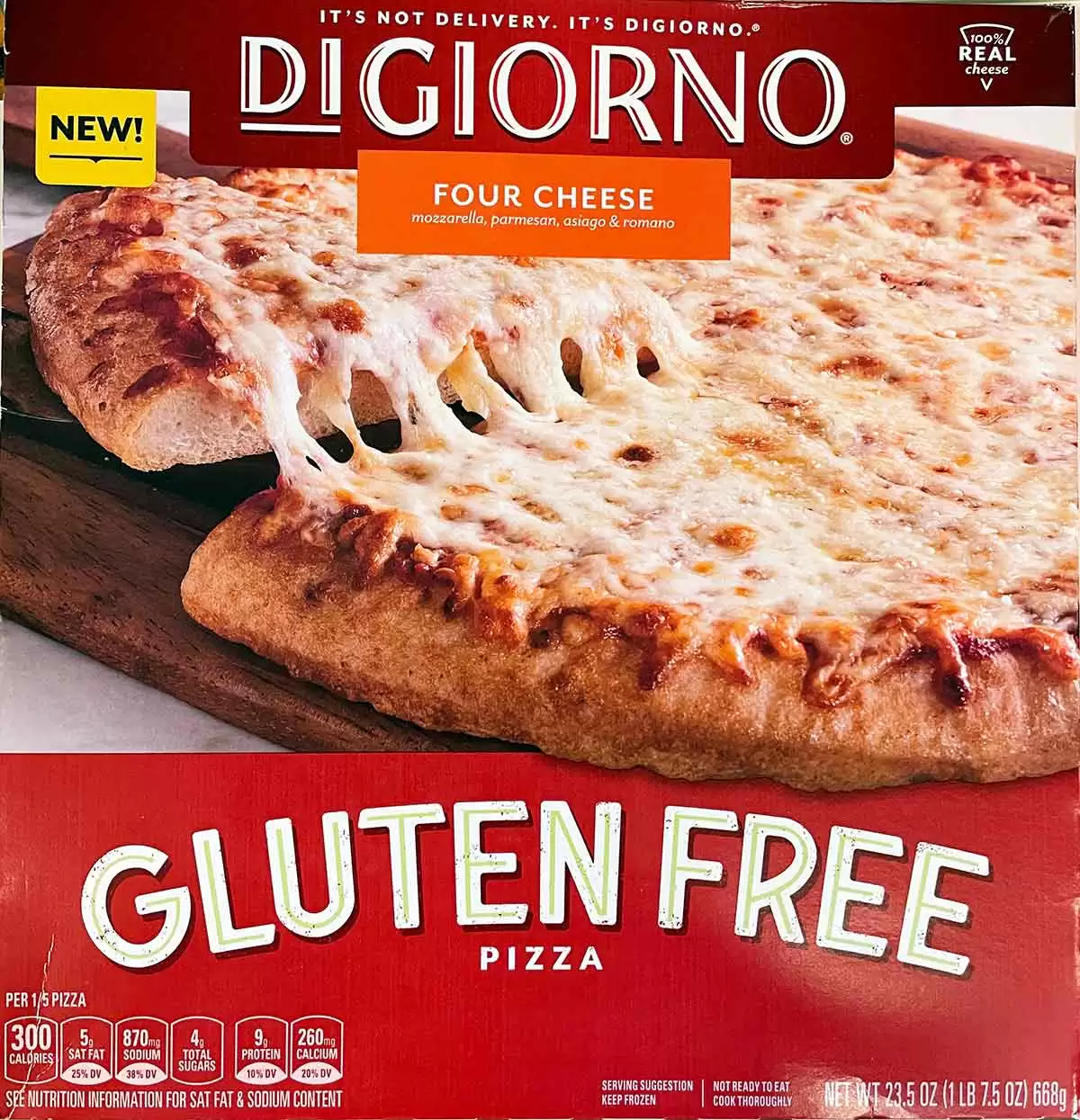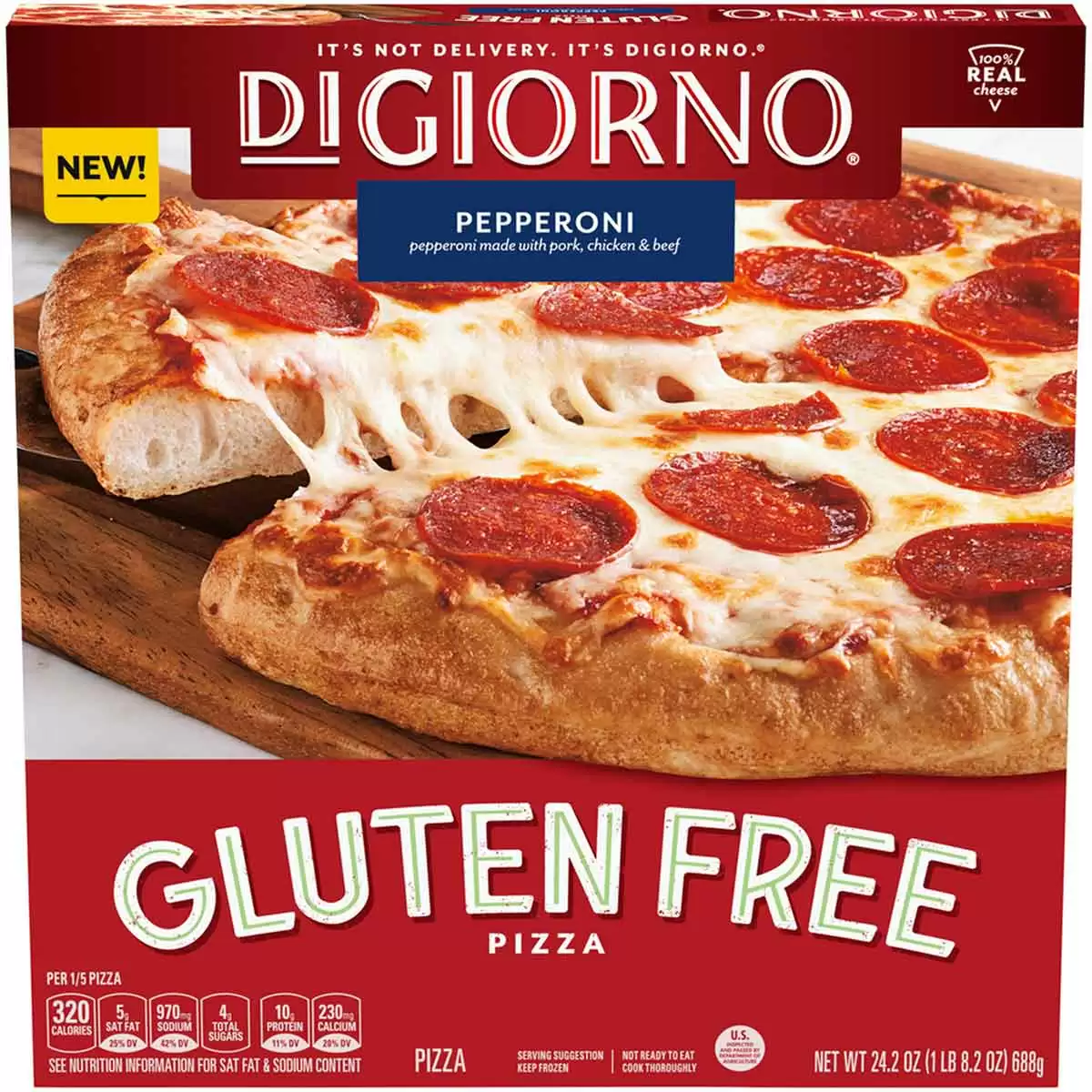
06/20/2024 - Update: DiGiorno Gluten Free Pizza was reformulated, and is now 100% gluten AND wheat-free. Gluten-free wheat starch is no longer used in the product, and I can say that the new forumula tastes outstanding! This excellent gluten-free pizza is widely available, and I get it at Target.
Original Article:
Celiac.com Sponsor (A12):
05/24/2021 - Shortly after DiGiorno released their gluten-free frozen pizza, the controversy began. Many people with celiac disease began to complain that the pizza caused celiac-like symptoms. Some pointed to wheat starch as a potential culprit. DiGiorno's frozen gluten-free pizza is made with "gluten-free" wheat starch. The FDA considers wheat starch to be “an ingredient processed to remove gluten.”
-
DiGiorno Gluten-Free Pizzas contain the following ingredients: Water, Wheat Starch*, low-moisture part-skim mozzarella cheese (cultured part-skim milk, salt, enzymes), tomato paste, Parmesan, Asiago and Romano cheese blend (cultured part-skim cow's milk, salt, enzymes), 2% or less of vegetable oil (soybean oil and/or corn oil), modified rice starch, sugar, salt, psyllium fiber, spices, dried garlic.
CONTAINS: WHEAT*, MILK.*The wheat starch has been processed to allow this food to meet the Food and Drug Administration (FDA) requirements for gluten-free foods.
Is DiGiorno's wheat starch gluten-free to FDA standards?
Foods made with wheat starch may be labeled gluten-free as long as the final food contains below 20 parts per million gluten. Fermented foods and ingredients made with gluten-free wheat starch can be labeled gluten-free.
So, wheat starch is not a problem by itself. Codex wheat starch, often referred to as “gluten-free wheat starch,” has had the gluten washed out to levels under 20 ppm, and has been considered safe for decades in Europe for people with celiac disease.
The Codex quality wheat starch used by Schaer to make Schaer gluten-free croissants is gluten-free to below 5ppm, so high quality gluten-free wheat starch is commercially available.
Also, wheat starch itself is not considered by FDA to be a fermented or hydrolyzed food. Although, products made with hydrolyzed wheat are subject to a different labeling rule for hydrolyzed foods. Basically, if the wheat starch used by DiGiorno contains hydrolyzed wheat, then it should not be labeled gluten-free.
Nima Sensor Test Results Indicate DiGiorno May Not Always be Gluten-Free
To get to the bottom of the problem, we went out and bought a few DiGiorno Gluten Free Four Cheese frozen pizzas at different times so that they came from different batches. We cooked the pizza according to directions, and tested two cooked pizzas using a Nima sensor, which has been shown to be accurate at detecting gluten in products down to 20ppm.
For the test, we used only a fresh, spongy piece of crust from the center of a piece of curst, with no other ingredients on it. One of our tests registered positive for gluten, and the other test, which was on a different batch of pizza, tested negative.
Possibility 1: Some or all of DiGiorno's gluten-free pizzas are not gluten-free. Perhaps DiGiorno is using wheat starch that does not meet Codex gluten-free standards, and some of their wheat starch contains gluten above 20 ppm. That means some of their wheat starch is not gluten-free below 20 ppm, and so the pizzas would reflect that.
Possibility 2: Our Nima Sensor is wrong and gave a reading in error, and DiGiorno is gluten-free, but according to Nima the sensor is very accurate, and can detect gluten in such products without issues.
Possibility 3: The wheat starch used by DiGiorno contains hydrolyzed wheat starch, and depending on the testing being done, it is creating misleading test results, for example, When testing starch for residual gluten, test-maker R-Biopharm recommends competitive R5 ELISA, which detects gluten that has been broken apart by processing procedures, such as hydrolysis, rather than sandwich R5 ELISA, which is used to quantify intact gluten protein. However, competitive R5 ELISA also has some limitations. It's doubtful that Nestle would use hydrolyzed wheat starch in this product because it could not legally be labelled gluten-free.
Actions
We reached out to DiGiorno to find out if they are using Codex wheat starch in their gluten-free pizza, and if they are regularly testing their ingredients and/or final product to ensure gluten-free status. We have yet to hear back from the company, but will update this article as information becomes available.
At this time, we don't recommend DiGiorno's "gluten-free" frozen pizzas for people with celiac disease or serious gluten sensitivity.










Recommended Comments
Create an account or sign in to comment
You need to be a member in order to leave a comment
Create an account
Sign up for a new account in our community. It's easy!
Register a new accountSign in
Already have an account? Sign in here.
Sign In Now